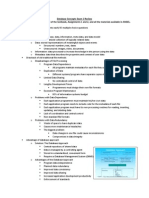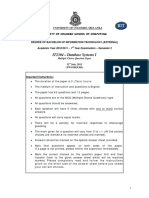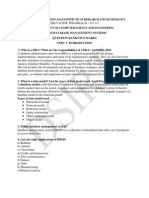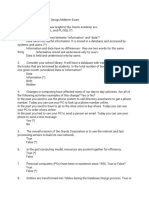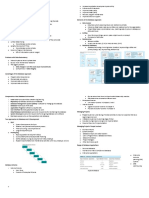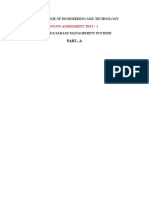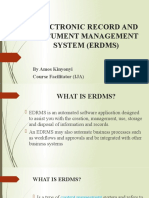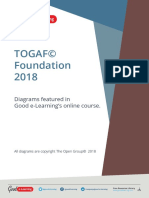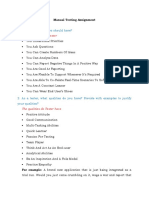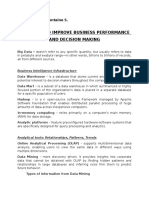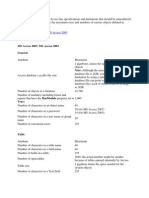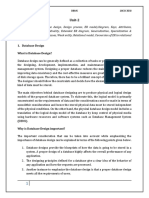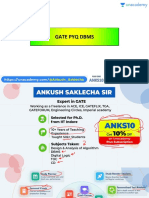0% found this document useful (0 votes)
61 views3 pagesAdvance Data Week 2&3
1. The document defines key terms like data, information, entity, ERD, business rule, table, fields, and records. Data becomes information when analyzed and meaningful. An ERD diagrams entities, properties, and interactions. A business rule restricts database components. A table has rows and fields of different data types. A record contains specific data.
2. The document provides examples of queries on a student database table, asking for counts of students by last name or course, and the student ID of one student. It notes the number of records and fields seen.
3. The document evaluates different statements about databases, entities, attributes, and relationships between entities like one-to-one, one-to
Uploaded by
Mercy AbejoCopyright
© © All Rights Reserved
We take content rights seriously. If you suspect this is your content, claim it here.
Available Formats
Download as DOCX, PDF, TXT or read online on Scribd
0% found this document useful (0 votes)
61 views3 pagesAdvance Data Week 2&3
1. The document defines key terms like data, information, entity, ERD, business rule, table, fields, and records. Data becomes information when analyzed and meaningful. An ERD diagrams entities, properties, and interactions. A business rule restricts database components. A table has rows and fields of different data types. A record contains specific data.
2. The document provides examples of queries on a student database table, asking for counts of students by last name or course, and the student ID of one student. It notes the number of records and fields seen.
3. The document evaluates different statements about databases, entities, attributes, and relationships between entities like one-to-one, one-to
Uploaded by
Mercy AbejoCopyright
© © All Rights Reserved
We take content rights seriously. If you suspect this is your content, claim it here.
Available Formats
Download as DOCX, PDF, TXT or read online on Scribd
/ 3




